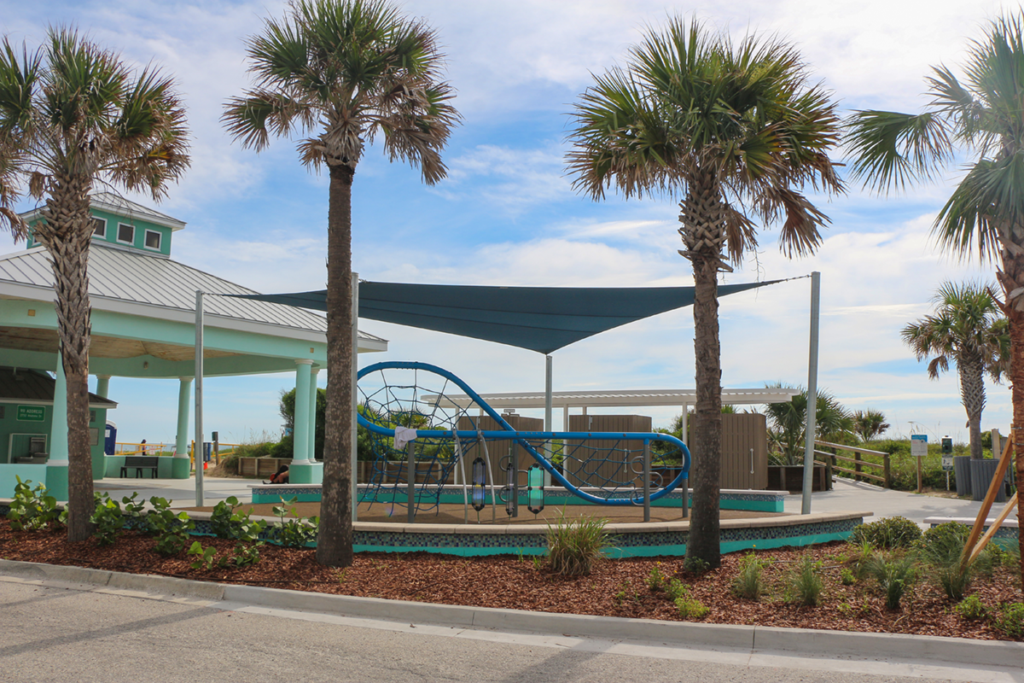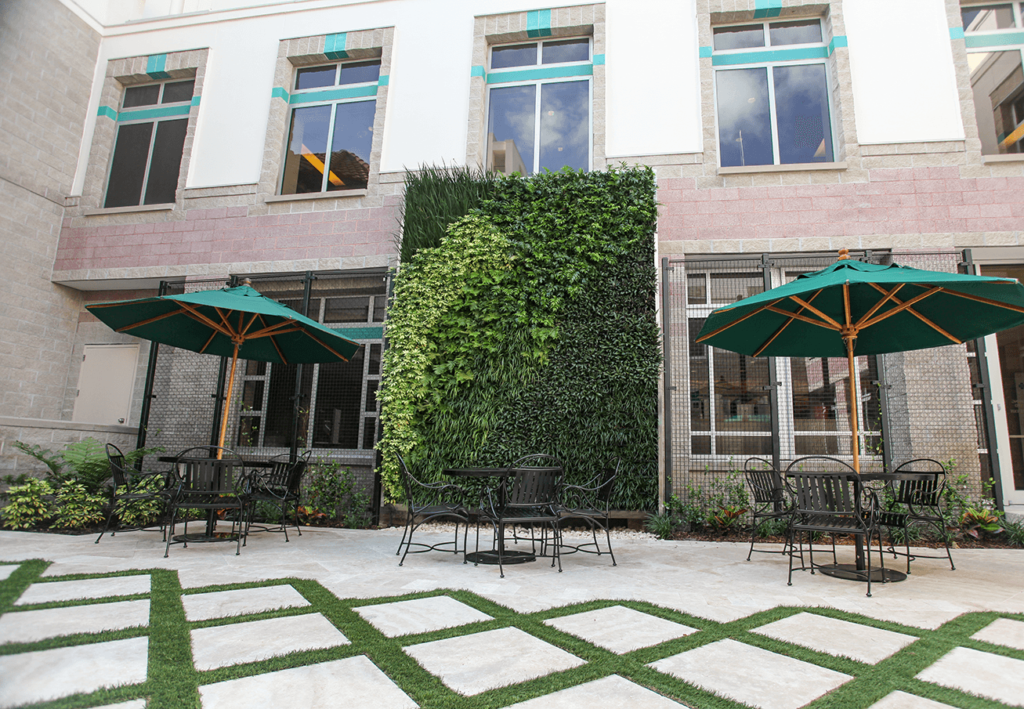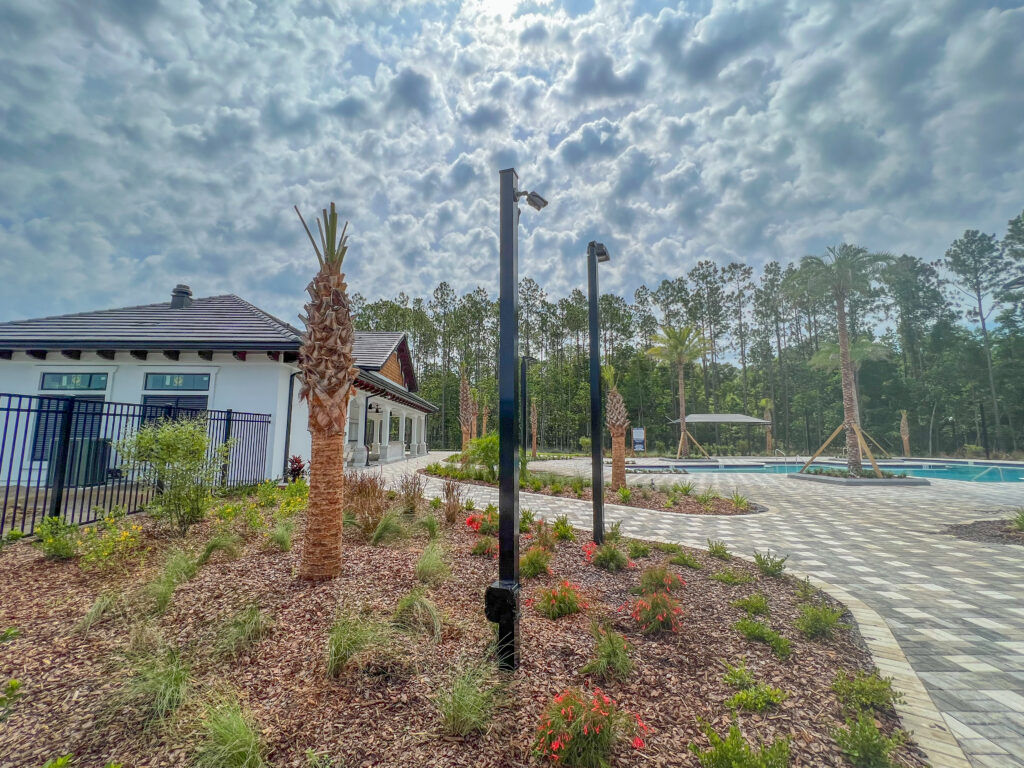Celebrating World Landscape Architecture Month
Written by: Kristy Buttermore
April is World Landscape Architecture Month (WLAM)—a global celebration of the impact landscape architects have on shaping vibrant, sustainable, and functional spaces. Established by the American Society of Landscape Architects (ASLA), WLAM highlights the profession’s role in designing everything from public parks and urban greenways to resilient infrastructure and outdoor gathering spaces.
At Matthews | DCCM, our Landscape Architecture team brings creativity, collaboration, and a deep respect for the environment to every project, whether it’s enhancing a local community space or integrating sustainable solutions into large-scale developments.
To celebrate, we asked Eric Lanehart, PLA, ISA, Director of Landscape Architecture; Sinem Bilgin, Senior Landscape Designer; and Gloria Mura, Architectural Drafter, to share their stories, design philosophies, and insights into the projects that make them proud. Their passion for blending beauty, function, and sustainability is at the heart of what we do—and we’re excited to highlight their perspectives.

What inspired you to pursue a career in landscape architecture?
Eric: Shortly after graduating at UF, I was working full-time in agricultural research and considering going back to graduate school. I read an article in a “magazine” (it was 1994) about the profession. I researched more and decided it was the thing to do, got accepted at VT, and followed through to now.
Sinem: I was 19… and I was interested in every form of art since early ages. One day, I saw Martha Schwartz’s project “The Bagel Garden” at one of my mom’s magazines and something clicked. She was my first inspiration then Andrea Cochran, Zaha Hadid, Diana Balmori, Gaudi, Frank Lloyd Wright followed.
Gloria: My parents are chemical engineers, so my first job was as a project designer of treatment water plants in Venezuela. Those 7 years of experience in the water treatment plants’ design were my first touch with the importance of the environment. I have always been passionate about nature and art, and my degree in architecture provided me with the opportunity to blend my experiences and knowledge with environmental stewardship. Improving community spaces can be incredibly fulfilling.
How would you describe the role of a landscape architect/designer to someone unfamiliar with the field?
Eric: The job is overall rewarding and can be a life long profession to be proud of. What is difficult is trying to design a space everyone will enjoy. That’s usually not practical, but it is a goal. It is impossible to know everything, so don’t kid yourself, after 20+ years I learn something new every week.
Sinem: Creating ART on land.
Gloria: A professional who plans and designs outdoor spaces, such as parks, gardens, campuses, and residential areas. Creating functional and aesthetically pleasing environments, we blend art and science to design spaces that are both beautiful and practical. Designs are sustainable and environmentally friendly, frequently incorporating native plants and eco-friendly materials. We tackle issues such as drainage, erosion, and accessibility to create safe and usable spaces. We collaborate with architects, urban planners, and civil engineers to integrate their design projects.
Can you walk us through your typical process when starting a new project?
Eric: I meet with clients and our civil engineers or planners to come up with a design for the site. We coordinate in the house for a week or more to produce a concept. That concept gets refined and sent off for further approval. Eventually we have an approved plan for construction and construction administration.
Sinem: In an ideal case, it starts with site program then selection of the right site for the owner. After we do the site analysis and inventory, concept plan finds its place with adjustments of code limitations of the site’s location. This is how it starts.
Gloria: Meeting client requirements is crucial for a successful landscape project.
Site analysis: check existing conditions, soil quality, existing vegetation, drainage, visualize topography, walk through the site using Google Earth maps, and survey’s plan. Select native Vegetation to fit the site, and also keep the client informed about the Selected Vegetation.
Develop the construction Documents, ensuring that the Specifications and details required for your drawings are included. Then, review them with the Planner and civil engineers before submission.
What’s a project you’re especially proud of, and why?
Eric: Currently, I am happy with the progress at Christ Church. I helped create two unique artificial turf play areas which double as a storm water catchment area. One play area is a 100’ long by 45’ wide football shape. The turf color will be brown with 2’ wide finger laces running down the middle. The other area is a 20’ diameter baseball with colored turf to match a baseball, 1’ wide red laces over a white turf play area.
Sinem: Memorial Park on Monument Road. I worked on this project with COJ and I used only native plants. It is a hard to find in Jacksonville, a beautiful and artistic park. I worked on both landscape and irrigation design of Memorial Park. We played with the topography and created a approximately 10’ high oval grass hill. This is my favorite part of the park. At that time, I was expecting my second son. Every time I pass by this park, it reminds me of my belly during that time. When I drive by, I see children rolling down the hill and it makes me so happy to watch the functionality of this park.
Gloria: I’m proud of all the projects that I have worked on, but recently I’m working on a multifamily development of more than 13 acres, which is challenging due to the tree mitigation, and how to create a new space for human beings with minimum impact on our environment. But my favorite so far are the Amenities area of Grand Reserve East at Palm Coast, also the Christ’s Church Mandarin-Athletics field.

How do you balance aesthetics with function and sustainability in your designs?
Eric: We make sure to use native plant material and a few basic rules. Use large trees where they have room to grow, smaller trees and palms to fill out the remaining locations. We mix pruned hedges with ornamental grasses that provide an alternating texture to the landscape. Incorporate a curvilinear landscape design at entrances and focal areas, especially for rectilinear commercial sites.
Sinem: I prefer visiting the actual site before starting to design. I believe understanding your audience and their needs, and observing the site will make a huge difference in functionality and sustainability of the project.
Gloria: Use colors and shapes that are pleasing to the eye, contrasting colors, divide the space into areas based on function, create efficient pathways, and place focal points where you want to express a sense of well-being.
Use drought-resistant plants that are suited to the local climate and soil; this is the best warranty in your design. Gardens for busy people need to be easy to maintain, yet still lovely to look at. They require simple design solutions with a strong overall concept and a pleasing layout for long-term appeal, allowing owners to sit back and enjoy a view.
What are some current trends in landscape architecture that you’re excited about?
Eric: In our area, we are seeing more availability for re-use water. I believe this is the best water source option for the client given the reliable source of water and pressure.
Sinem: The idea of “outdoor wellness” excites me! I try keeping the large oak or any other trees on site while designing. It is both cost-effective and therapeutic.
Gloria: Bioretention systems, planter box micro-bioretention, and green walls.
Rain gardens are an important part of channeling and managing rain water. A bioretention system or stormwater planter is an innovative way of not only holding that water but allowing it to be purified before it is allowed to return to ground water or piped to main wild water sources. A bioretention planter also adds lively appeal to landscaping when appropriate filtering plants are present.
A bioretention planter is a contained area with a flat bottom that is filled with plants. The run-off is collected in the area and the layers of mulch, soil, and plant roots, filter out impurities.
While rain gardens are considered bioretention systems, stormwater planters go a step further. Rain gardens do not have a physical barrier outside of soil, rock, or sod to contain the water. In a bioretention system, there is generally a concrete or cement box built that does not allow water to percolate through the sides. Instead, the water must seep through the layers at the bottom, which capture impurities. There may be an infiltration system where the cleansed water seeps into native soil, or a filtration system, where the water is piped to natural water sources.
Green walls: Biophilic design refers to the use of natural products in the man made environment to allow people to feel closer to nature. Biophilia is shown to improve attention, creativity, and productivity; support higher levels of creativity; enhance learning and cognition; and lead to overall increases in happiness. Greenwalls are the most efficient way to include biohpilia in your space.
How do you incorporate sustainable or green infrastructure into your designs?
Eric: We source products that are easy to purchase, plant material grown in Florida or South Georgia. We pick hardscape products sourced in Florida or the Southeast US.
Sinem: While designing a project, it is always good to respect nature itself along with the existing community around the site. Minimizing energy consumption, protecting wetlands, using environmentally preferable products, making surveys for the local community, saving healthy existing trees, and designing around them would always be beneficial.
Gloria: Living walls, Rain Gardens and Bioswales. Permeable Pavements (incorporate gravel or grass pavers for low-traffic areas to maintain permeability); Create constructed wetlands to naturally treat wastewater and provide habitats for wildlife; Choose native and drought-resistant plants that require minimal water and maintenance; Implement xeriscaping techniques to reduce water usage and enhance the landscape’s resilience; Use Budget-Friendly Upcycled Materials; Engage the community in creating and maintaining green spaces, fostering a sense of ownership and reducing maintenance costs; Educate clients about the benefits of green infrastructure; Present successful case studies and visual examples to demonstrate the potential of sustainable designs.

How do you collaborate with civil engineers, planners, and other disciplines at Matthews | DCCM?
Eric: Daily, we coordinate using email, Teams, and in person. I use the snip-it tool every day to provide a team member a quick and reliable graphic to explain something.
Sinem: Once the owner selects the site, we get together with planners and prepare a site inventory and let them know their options, buffers, and other code requirements. Then, engineers do their magic by preparing design, grading, existing design, and utility plans for us. After they are ready, we discuss who is doing what and when. Then we start designing landscapes first, then irrigation plans. We always keep in touch with engineers to be on the same page.
Gloria: I used to establish new standards to improve our productivity with the CAD manager. I would create the tree inventory for most of our projects, ensuring adherence to each county’s Land Development code. Additionally, I produce cut sheets to guarantee that our projects are sustainable and eco-friendly. I also develop new details while keeping the old ones up to date. As a landscape designer, I work on concepts for proposals and collaborate closely with engineers to ensure compliance with the landscape code required for each project.
What’s the most rewarding part of seeing your design come to life?
Eric: Watching people use the built space.
Sinem: While driving all around Jacksonville, I see city parks, monument signs, club houses, playgrounds, sports complexes, and commercial buildings that I worked on landscape and irrigation plans for. This makes me so proud and happy! I often visit, stop by with my family, and take photos of these projects.
Gloria: Hebrews 11:1 “Now faith is the assurance of things hoped for, the conviction of things not seen.”
The most rewarding part of seeing a design come to life often lies in the transformation process and the fulfillment of that initial vision. Each project to me is the best explanation of faith; it is what you can see in your mind, then you can sketch it out on a piece of paper, and then there are many things you need to accomplish to bring that project to life.
What advice would you give to someone interested in a career in landscape architecture?
Eric: Every year during the summer or during breaks choose a different internship related to the field. Examples: landscape architecture firm, a plant nursery, a pool contractor, a paver contractor, landscape maintenance and irrigation contractor. Also, study for your licensure exams while you’re in college, don’t put it off.
Sinem: I can only say, “enjoy the journey!”
Gloria: Develop a strong portfolio. Include a variety of projects in your portfolio, highlighting your design skills, creativity, and technical abilities.
Stay Current with Trends and Technologies, Software Proficiency like AutoCAD, Land f/x, SketchUp, Revit, GIS, and Twinmotion. These tools are essential for modern landscape architects. Stay informed about sustainable design practices and green infrastructure. Clients increasingly value eco-friendly solutions.
Join Professional Organizations: Become a member of organizations like the American Society of Landscape Architects (ASLA). This provides networking opportunities, resources, and continuing education.
Attend Conferences and Workshops: Participate in industry events to learn from experts, stay updated on trends, and connect with peers.
Collaboration: Work well with other professionals, such as architects, engineers, and urban planners. Successful projects often require interdisciplinary collaboration.
Understand Local Regulations: Familiarize yourself with local land development codes and regulations. Compliance is crucial for project approval and success. Understand environmental regulations and best practices to ensure your designs are sustainable and legally compliant.
Need Landscape Architecture Services? We’ve Got You Covered!
Whether you’re planning a new landscape design or need expert consultation on sustainable outdoor spaces, Matthews | DCCM is here to help. Our experienced team specializes in creating beautiful, functional, and environmentally responsible landscapes that enhance communities. Contact us today to learn more about our landscape architecture services and how we can bring your vision to life!
additional articles
-
October 10, 2025
International Day for Disaster Risk Reduction 2025: Fund Resilience, Not Disasters
-
October 2, 2025
October Is National Community Planning Month
-
September 11, 2025
Celebrating Growth from Within: Brynna Bartlett Promoted to Project Manager
-
August 15, 2025
Back to School Drive Success: Supporting Local Youth at Port in the Storm
-
August 6, 2025
Celebrating Professional Engineers Day